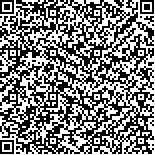| 本文已被:浏览次 下载次 |

码上扫一扫! |
|
|
|
| Structural effects analysis of an electromagnetic wave propagation resistivity LWD tool by 3D finite element method |
|
XU Wei1,2, KE Shizhen1,2, LI Anzong3, CHEN Peng3, ZHU Jun3, SANG Quan3
|
|
(1.State Key Laboratory of Petroleum Resources and Prospecting in China University of Petroleum, Beijing 102249, China;2.College of Geophysics and Information Engineering in China University of Petroleum, Beijing 102249, China;3.China Petroleum Logging Company Limited, Xi 'an 710061, China)
|
| Abstract: |
| The effects of metal mandrel, coil substrate, antenna slot, antenna slot filling material, and shield cover of an electromagnetic wave propagation resistivity logging while drilling(LWD) tool were simulated by a 3D finite element method. The results show that the low resistivity of metal mandrel, coil substrate, and shield cover can lead to significant electromagnetic signal reduction, whereas the effect of the slot filling material with high resistivity is nearly negligible. Under the consideration of mechanical strength, the attenuation of electromagnetic signal can be minimized via increasing the slot length, enlarging the space proportion of slot, and reducing the slot depth. The structural effects may result in nonlinear response changes with the formation resistivity; after eliminating the structural effects, the responses recover to change linearly with the formation resistivity in a broad range, satifying the requirement of linear calibration. However, due to the decrease of magnetic flux in the coils after eliminating the structural effects, the tool responses may become smaller than those without the structural effects. |
| Key words: logging while drilling finite element method instrument structure electromagnetic wave propagation |
|
|